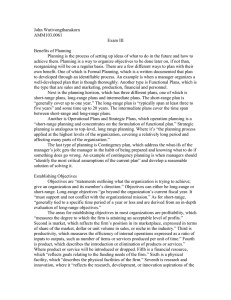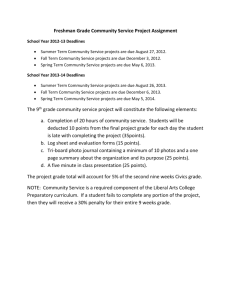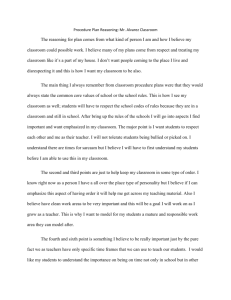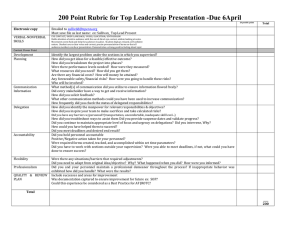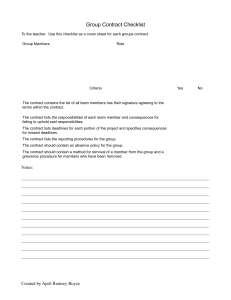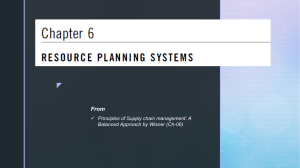Lesson Five
advertisement
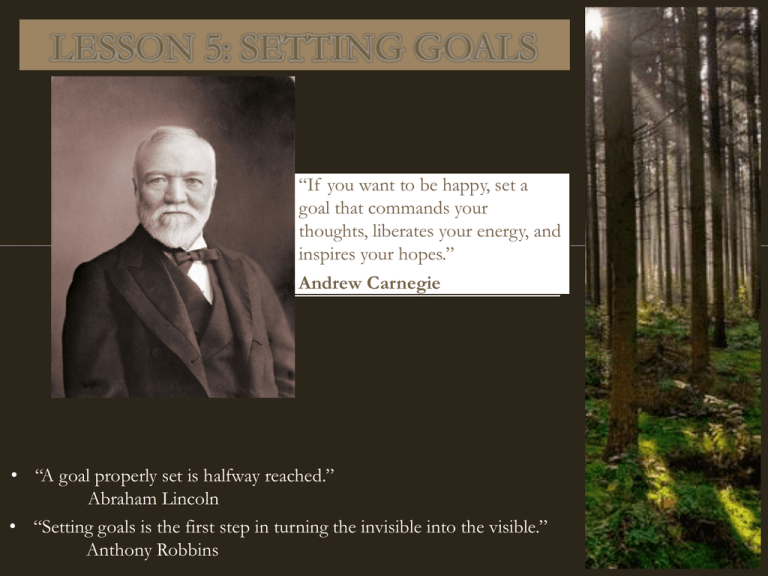
LESSON 5: SETTING GOALS “If you want to be happy, set a goal that commands your thoughts, liberates your energy, and inspires your hopes.” Andrew Carnegie • “A goal properly set is halfway reached.” Abraham Lincoln • “Setting goals is the first step in turning the invisible into the visible.” Anthony Robbins 1. WHAT IS A GOAL? • A goal is an objective, target, or result from the completion of tasks, activities, or programs. • Goals are necessary to promote growth. 2. WHAT ARE THE THREE CATEGORIES OF GOALS? • Short-range goals usually deal with current activities. • - Applied on a daily basis • Intermediate goals: Built on foundation of short-range goals. • - deal with months and years. • Long-range goals • - Reflect the dreams, visions, and mission of the organization. 3. WHAT ARE THE BASICS OF SETTING GOALS? • Five basic characteristics of goal setting. • • - (Be “S.M.A.R.T.”) Goals are only meaningful if Specific • - Write down EXACTLY what is to be done. For accurate feedback, goals must be Measurable (this monitors the progress). Ensure Accountability to individuals responsible for the task. Goal be challenging but Realistic. Make Timely deadlines toward achievement. • • • • 4. HOW DO YOU SET GOALS? • Purpose: To monitor progress through periods of time. • First: Specify the general objective. • Second: Specify how to measure the performance. (units, time, money . . .) • Third: Specify the standard or target objective. SETTING GOALS CONTINUED • Fourth: Specify the time span involved. • - Deadlines must be put into place. • Fifth: Prioritize goals. • Sixth: Rate goals based on difficulty & importance. • Seventh: Determine coordination requirements. 5. HOW TO OBTAIN ORGANIZATIONAL GOAL COMMITMENT? • Goals alone cannot assure success . . . strategies and actions by leaders must be instigated. • First step: managerial support. • • - commitment from leaders. - provide supplies, time, resources. • Employee participation. • - Managers must seek input. OBTAIN ORGANIZATIONAL GOAL COMMITMENT CONTINUED • Knowledge of organizational capabilities. • - different talents among employees. • - match goal difficulty with capabilities of group or individual. • Strategic use of rewards. • - connect reward with accomplishment.
